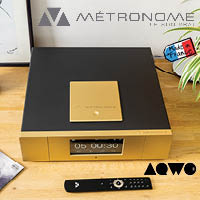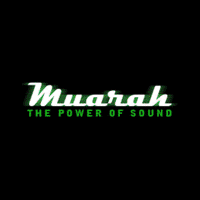Rega Apheta 2 MC Phono Cartridge
Just when I was about to begin serious listening for a serious review of Rega's moving coil Apheta phono cartridge, I got the news from a local dealer that a 2nd generation version was ready to go. Usually, these generational upswings are gentle, akin to composers changing a few notes here and there to stretch copyright length. But the buzz on the new Apheta 2 was different. Big changes. I'd wait.
Rega promotion says that the '...Apheta 2 features a super high-powered, neodymium magnet and a coil meticulously hand wound on an iron cross that is fifty percent smaller than the original. This weight reduction allows us greater freedom to track the vinyl groove ensuring even more detail is extracted from the vinyl.
To further enhance the design, the Apheta 2 is housed within a completely redesigned, single piece, aluminium anodised body and protected by a CAD designed, clear rigid cover to protect the internal fine wires, making handling whilst fitting, safe and risk free.
The entire production department was overhauled at great expense to introduce the Apheta 2 MC. Huge investments into High Definition magnification cameras and displays have allowed us to work at much higher detail and far tighter tolerances than ever possible on the original model.' Yes, big changes.
Until time with the two mc Aphetas, my Rega cartridge experience was primarily with their inexpensive moving magnet carts. The original Elys and the Exact. Not a fan of either. Even on home Planar 'tables and their tremendous tonearms, I found them rough and ready. Not much on the sophistication front. I have not heard the upgraded Elys 2 or much newer Exact.
So, what a wonderful smile I discovered when hearing Rega's moving coils for the first time. Sophistication, bloom, timbre, sweetness, air, presence. In spades.
You can order the Apheta 2 setup directly from the factory on the Rega RP8 or RP10 turntables. An easy choice. Play the cart for a 100 hours before you begin your attraction. If you fly solo, Rega has a setup guide. And there's always this.
The Apheta 2's timbral character was warm yet detailed from the get go. What I really enjoyed was the way the cart clearly separated the musical lines and images. All well behaved moving coil cartridges do this. In this regard, the Apheta 2 matched my experiences with Clearaudio cartridges I've owned or reviewed in the past - Concerto and Titanium, the primaries. Soundstage was wide and had long throws, and the images were rock solid. The sophistication was tangible and the opposite of my experiences with Rega's moving magnet cartridges.
I always chose three or four superior LP recordings to use at length during analogue auditions. Not for musical specifics, but for general playability. One of my favourite recordings is the Academy of St. Martin in the Fields conducted by Neville Marriner playing Ralph Vaughan Williams' Tallis Fantasia. The string playing on the original Argo Kingsway Hall LP is spectacular. One of the best string sections assembled anywhere, live or on disc. The orchestration is complex and can be damn right thorny. Not the English idyll that many expect from RVW. Any old cart can give the listener a thrill, the recording and playing is so good. But a special cart like the Apheta 2 set up on a happy 'table and arm like the RP8, can produce magic.
The macro dynamics produced from the massed strings can be unnerving for those not expecting such volume. Yet, whether the softest ppp from Orchestra 2 at the other end of the hall (like an echo, according to the composer) to the largest fff en masse, the Apheta 2 handled every thing in stride. As good in this regard as any other I've heard listening to this LP, including an original van den Hul Frog and Koetsu Rosewood Signature. No distortion, no smear, with all the lines unravelling musically under complete control.
If that wasn't good enough, the Apheta 2 doubled down on many of the tutti strings being muted. And the softened instruments could be heard clearly in and among the unmuted. Solo strings were mesmeric, especially the distinction of specific playing styles between violin and viola soloists, not their timbre,
Problematic vinyl such as mid price Canadian classical pressings could be unwound a little, but the Apheta 2 is not a miracle product. Bad vinyl sounds like bad vinyl. It tracks likes a champ and presents an easy load (used here in conjunction with the Rega Aria Phonostage) but glassy vinyl sounded unresolved and unsatisfying with rough vinyl sounding as is. No silver bullet.
I set the DIP switches on the Rega Aria Phonostage to the manual's suggestion of:
Left and Right MC Loading Resistance - 1 only on = 100 Ω; Left and Right MC Loading Capacitance - 3 and 4 off = 1000pF; Left and Right MC Gain - 1 on and 2 off high gain = 69.3dB
The Rega suggestion sounded just fine. I think tinkerers could have some fun, though. The build quality is excellent and unlike the tight lug nuts that Rega places on much of its kit, the Apheta 2 could be matched easily with different tonearms, phono cables and phono stages.
The treble is in balance with the richly detailed midrange. And the bass, while not subterranean, plumbs most real world depths. You won't get the very bottom of the pool in Caverna Magica, but for most orchestral recordings, the bass is real and emphatic. More importantly, it always retains the original timbral accuracy.
At $1895, the Apheta 2 is in a buoyant market place. Any of the biggies like Ortofon (Cadenza Bronze) and Clearaudio (Talismann v2 Gold) among others produce moving coils in the dozens to compete. But Rega has product lineage on its side. Audiophiles love Rega, its singular direction and engineering prowess. I'm not sure how the moving magnets are doing, but in the here and now and at this price point, I could live happily ever after with the Apheta 2. But, in the back of my mind, I'm plotting an Aphelion grab. It's the new top 5K moving coil at Rega. I'll report my findings.
Further information: Rega

























